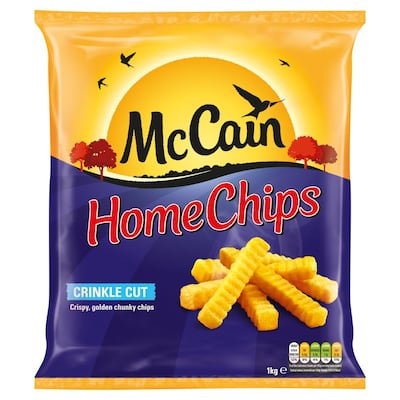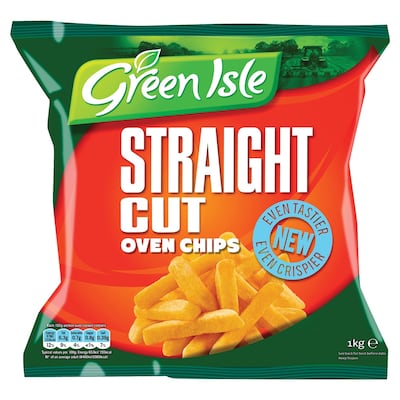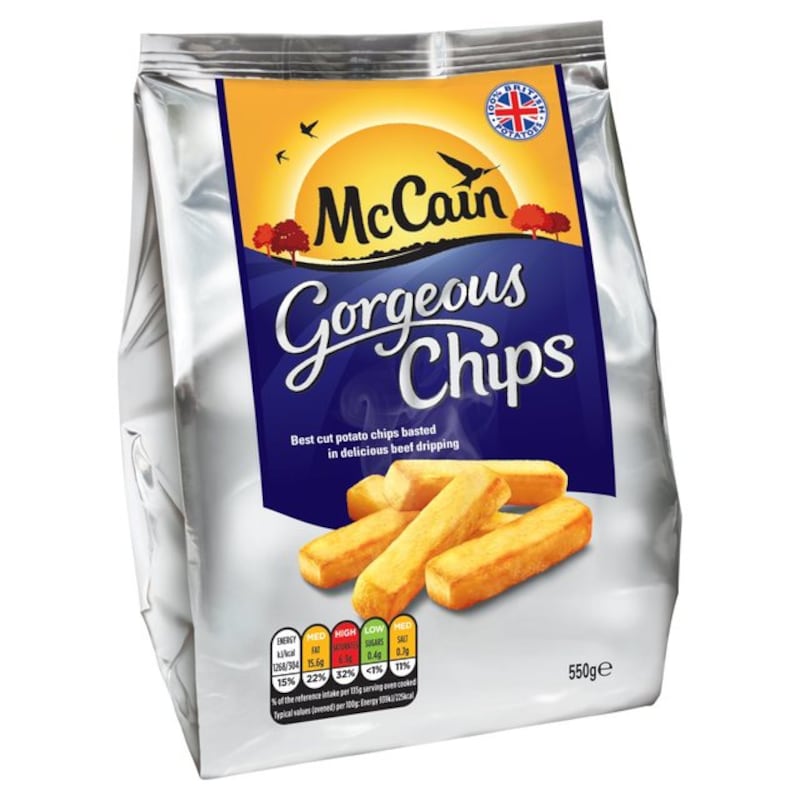Oven chips are surprisingly easy to make. Just cut up a few potatoes, sprinkle with oil, salt and maybe a few spices or herbs and put them in the oven. But they can’t really be hurried and can take up to an hour to cook.
So it’s hardly surprising that frozen chips have become popular with those who don’t have time to make their own, or don’t live near a chip shop. Most frozen ones cook in half the time – and there’s no preparation needed.
Having chips is never going to be seen as the healthiest way to get your potatoes, so it might seem that one bag or box is just like the other.
That’s not the case.
So what can you learn from the packaging?
When it comes to ingredients, there is a big disparity. Some list just potato and fat in the form of oil or dripping. Others have long lists of unfamiliar words such as dextrose, a form of sugar. Yes, some manufacturers add sugar to chips.
McCain’s Crinkle Cut Home Chips have potatoes (90.7 per cent) and sunflower oil (4.6 per cent), with batter accounting for the rest (ie about 5 per cent).

That batter has a lot more than the usual flour and water. It also has modified maize starch, modified tapioca starch, cornstarch, rice flour, turmeric extract, paprika extract and salt. Turmeric and paprika add colour and some spice. The others are there to aid in processing one way or another by helping the chips to keep their shape or moisture. The question is, whether you want to eat those additives or not.
In Europe, the monitoring of food additives is carried out by individual European Union member states on advice from the European Food Safety Authority, which sets "acceptable daily intake" levels. These are defined as the maximum amount of a chemical that can be taken daily over a lifetime with no appreciable health risk. That's the official take.
Whether you find it acceptable is up to you.
There’s even more for avid readers to discover with Green Isle’s Oven Fries, which likewise has a coating of about 5 per cent. The factory extras in this product that you are unlikely to use at home generally have an explanation as to why they are there. Among these are: yeast extract, dextrose, sunflower seed oil, E450, E500, xanthan gum, sunflower seed oil and rosemary extract.

Yeast extract is a popular ingredient in the food industry these days as it enhances savoury flavours and sounds wholesome. Be aware it has a high concentration of glutamate, from which monosodium glutamate (MSG) is derived. This helps to explain why so few products use MSG as an ingredient now. Dextrose is a form of sugar as mentioned. E500 refers to sodium carbonates, which can come from a number of sources, and is used here as a raising agent. E450 refers to diphosphates, which are used as a raising agent and a stabiliser. The European Food Safety Authority is evaluating the use of phosphates as food additives this year and some expect they may be removed from the list of acceptable ingredients in future.
Xanthan gum
Xanthan gum is made by fermenting sugar using a bacteria. It is something coeliac or gluten-intolerant bakers may have in their kitchen cupboards as it helps with the consistency of gluten-free bread. It can be used to improve the texture, consistency, flavour, shelf life and appearance of many foods.
Rather than boning up on the chemical properties of the various food additives, it is simpler to choose chips made using just potato and fat. A bonus is that they often work out cheaper than those covered in batter or coating.
McCain’s Original Oven Chips, for example, have just potato and sunflower oil listed as ingredients. Green Isle’s Straight Cut Fry Chips list potatoes (96 per cent) and vegetable oil. Of course, that “vegetable oil” could be anything from corn, to soya bean to palm oil.

McCain’s Gorgeous Chips, are cooked in beef dripping (11 per cent), though they work out at almost €8 per kilogramme.
Just don’t be fooled on serving size either.
A number of these packets give jolly calorie information on the front indicating that a serving had just about 200 calories, but these were based on a portion size of 125g or 135g. That’s not a lot considering that the average bag of chips from a fast-food outlet weighs closer to 300g.
It all adds up.
FOOD LABELS SERIES
1) Being a successful shopper
2) Bread
3) Milk
4) Cereal
5) Rashers
6) Yoghurt
7) Soup
8) Hummus
9) Pasta sauce
10) Chinese ready meals
11) Frozen chips
12) Chilled fish




















